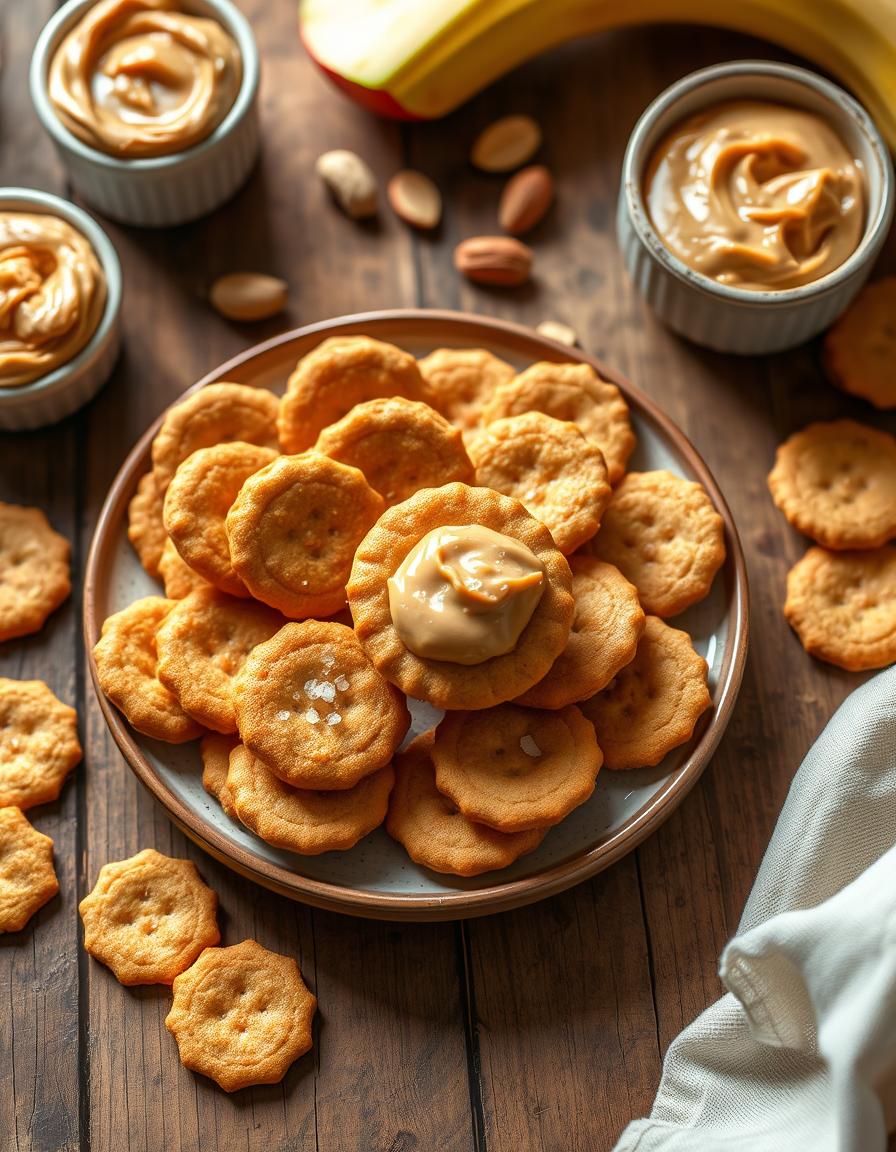Peanut butter crackers are a popular snack that many people enjoy, whether as a quick bite between meals or as part of a lunchbox treat. They combine the creamy, nutty flavor of peanut butter with the crunch of a simple cracker, creating a delightful taste that’s hard to resist. But if you’ve ever wondered about the peanut butter crackers calories and whether this snack fits into a healthy diet, you’re in the right place.
Understanding Peanut Butter Crackers Calories
When you hear “peanut butter crackers,” you might picture a small stack of crunchy crackers spread with a thick layer of peanut butter. But the calories vary depending on the brand, serving size, and how much peanut butter is actually on the crackers.
On average, a serving of peanut butter crackers (which is usually around 5-6 crackers) contains roughly 150 to 200 calories. This makes them a moderately calorie-dense snack, meaning they provide a decent amount of energy in a small portion.
Breaking Down the Calories
Here’s how the calories generally break down in peanut butter crackers:
| Component | Calories (approximate) |
|---|---|
| Crackers (5-6 pieces) | 70 – 90 |
| Peanut Butter (1 tbsp) | 90 – 100 |
As you can see, most of the calories come from the peanut butter part. Peanut butter is calorie-rich because it contains fats — the good kind, but fats nonetheless. This means that a little peanut butter goes a long way in boosting energy.
Nutritional Value: More Than Just Calories
While counting calories is helpful, it’s equally important to think about what you’re getting nutritionally. Peanut butter crackers are a unique combination because they offer both carbohydrates and protein, along with some fats.
Protein Content
Peanut butter is a good source of plant-based protein. Protein helps your muscles recover and keeps you feeling full longer. The crackers contribute some carbs, which your body uses for quick energy. Together, they make a balanced snack option for sustained energy between meals.
Healthy Fats
The fats found in peanut butter are mostly unsaturated fats, which support heart health when eaten in moderation. These fats also help absorb fat-soluble vitamins and keep your skin glowing. However, because fats have more calories per gram than carbs or protein, it’s important to enjoy peanut butter crackers without going overboard.
How to Enjoy Peanut Butter Crackers Wisely
Peanut butter crackers can be a healthy snack if consumed thoughtfully. Here are a few tips to ensure your snack remains a good choice for your health:
- Watch portion sizes: Stick to the recommended serving size to avoid sneaky calorie overloads.
- Choose natural peanut butter: Look for peanut butter with minimal added sugar and salt.
- Pick whole grain crackers: They add fiber, which aids digestion and helps keep blood sugar steady.
- Balance your snacks: Pair peanut butter crackers with a piece of fruit or some veggies to add vitamins and minerals.
It’s also a good idea to avoid highly processed versions filled with preservatives or extra sugars. These can turn your snack from a nourishing bite into a sugary calorie bomb.
Peanut Butter Crackers Calories Compared with Other Snacks
Sometimes comparing snacks helps you make better choices. Here’s how peanut butter crackers stack up calorie-wise against some common options:
| Snack | Approximate Calories per Serving |
|---|---|
| Peanut Butter Crackers (5-6 pieces) | 150 – 200 |
| Potato Chips (1 oz) | 150 |
| Granola Bar | 190 – 220 |
| Fresh Apple | 80 – 100 |
As you can see, peanut butter crackers hold their own as a satisfying snack without going overboard on calories — especially when compared to some processed alternatives.
Health Tips When Snacking on Peanut Butter Crackers
Snack time doesn’t have to be a guilty pleasure. Here are some health tips that can keep your peanut butter crackers enjoyable and beneficial:
- Balance is key: Pair your crackers with a source of hydration, like water or herbal tea, to stay refreshed.
- Mind your sodium intake: Some crackers can be salty. Check labels to keep salt levels moderate.
- Mix it up: Use peanut butter crackers as a base to add sliced bananas or berries for extra fiber and antioxidants.
- Snack timing: Eating peanut butter crackers mid-morning or mid-afternoon can help stabilize your energy levels.
By following these tips, you can make the most of this snack without tipping your daily calorie budget.
In case you want to explore other food ideas or recipes, you might find interesting ways of cooking with simple ingredients. For instance, if curious about Mexican cuisine, check out how to cook tamales in the oven. It’s a handy guide that breaks the process down step-by-step.
Frequently Asked Questions
Are peanut butter crackers good for weight loss?
They can be, if eaten in appropriate portions. Peanut butter contains healthy fats and protein, which can help you feel full. Just avoid eating large amounts and balance them with other nutritious foods.
Is natural peanut butter better than regular peanut butter for crackers?
Yes, natural peanut butter usually contains fewer additives like sugar, salt, and hydrogenated oils, making it a healthier option for your snack.
Can peanut butter crackers cause allergies?
Yes, if you are allergic to peanuts or gluten (found in some crackers), you should avoid peanut butter crackers or look for allergy-friendly alternatives.
Conclusion
Peanut butter crackers calories sit at a moderate level, making them a convenient and tasty snack choice when consumed in the right amounts. They offer a nice mix of protein, healthy fats, and carbs, giving your body a quick but sustained energy boost. Choosing natural peanut butter and whole grain crackers can further improve the health benefits of this snack.
Remember to enjoy them in moderation, balance them with other nutrient-rich foods, and pay attention to portion sizes. That way, you’ll keep your snack time both satisfying and good for you. Next time you reach for a snack, consider peanut butter crackers as a smart and tasty option that’s easy to enjoy on the go!

I’m Sandy – sharing simple tips, plans, and motivation to help you stay in a calorie deficit Plan and reach your fitness goals.

